|
|
|
About This Site |
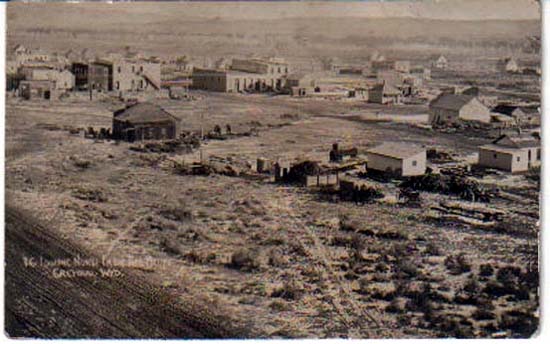 Greybull, looking north, approx. 1910. As was typical of many small Wyoming towns, the first business in Greybull was a saloon, the Greybull Saloon, a wooden false-fronted structure. The name was made by painting the name "Grey" on the building below which was painted an image of a gray bull. Interestingly, the image was not of a bison but of a bovine. 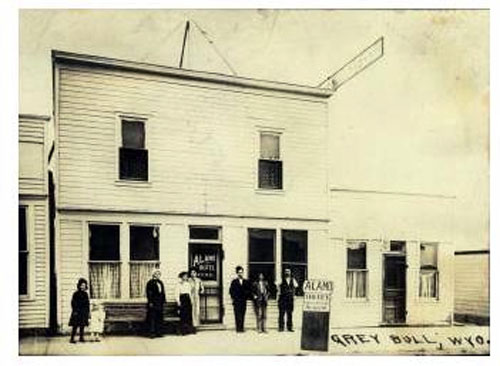 Alamo Hotel, Greybull, 1912 Like many other businesses in town, buildings were upgraded or replaced by more substantial structures.
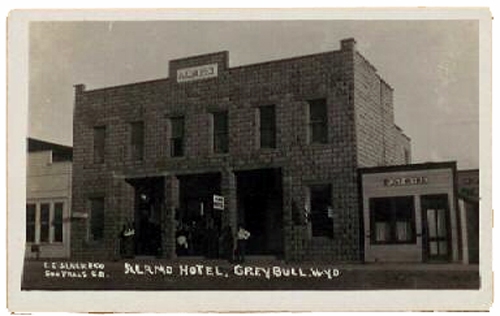 Greybull, 1920's. The small building to the right of the Alamo Hotel is the post office. The Alamo was constructed by Fred and William Clearman in 1907. The first telephone exchange was located in the Alamo. The Alamo during Prohibition devloped a reputation as a place where one might obtain illegal refreshment. Authorities did not look kindly upon it. In one action in an attempt to cause it to be closed, it was alleged: That premises in the town of Greybull, known as the Alamo Hotel, are, and for two years last past have been, continuously and habitually used, owned, or leased for selling, peddling, keeping, and dispensing intoxicating liquor contrary to law; that it is now and has for two years past been maintained, used, or leased as a tippling house, or saloon, to which drunkards, thieves, and disorderly persons of both sexes resort, and wherein persons purchase and consume intoxicating liquor, become drunk, quarrelsome, or stupified, and where such stupified persons are relieved of valuables by thieves frequenting the place, and where liquor in wholesale quantities is stored for use in liquor traffic of wide extent throughout the state.Notwithstanding injunctions and contempt citations against the owner, Sheriff A. C. Burgess apparently believed that the hotel continued to be used for nefarious purposes. On December 26, 1926, the sheriff and a posse of seven men conducted a search of the hotel. The search was, at the least, unorthodox. The search lasted some 22 hours. The proprietress of the hotel, Mrs. Shomo, and her sister were kept virtual prisoners in the hotel for the two days. It was ten below zero and the posse kept the doors of the hotel open. Mrs. Shomo's bed was searched five seperate times. When the sister attempted to get coffee from the hotel kitchen, five members of the posse surrounded her, placed all the dishes on the floor and turned the kitchen table upside down. Mrs. Shomo did what any modern red-blooded American would do -- she sued (and collected). See Shomo v. Burgess, 344 Wyo 197, 10 P. 2d 611 (1932). Of course, not all of Greybill was devoted to saloons and pool halls.
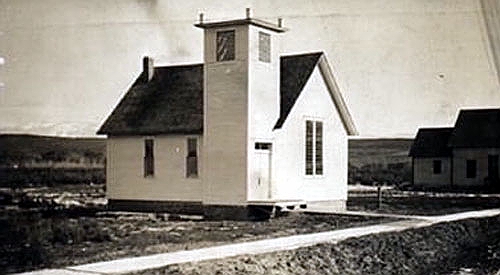 Greybull Baptish Church, undated The Baptist Church was the first church building constructed in Greybull and was dedicated on September 26, 1909. Prior to the construction of the church building, the congregation met in Wyant's Grocery.
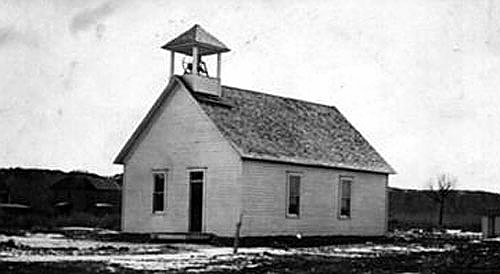 Greybull Presbyterian Church, undated The Presbyterian Church was formally chartered on January 30, 1908. The church building, however, was not completed until 1910. The building cost $760.00 plus $40.00 for the furnishings. Before construction of the church building, the congregation met in Engle's Big Store. The church building was later moved and the present church building constructed on its site. As indicated an important part of the growth of Greybull was the coming of the oil industry and the Chicago, Burlington and Quincy Railroad. The railroad provided easy transportation for cattle and tanker cars bearing oil, and the two refineries owned by Standard of Indiana and the Midwest Oil Company provided needed employment and prosperity. Thus, Greybull rapidly lost its frontier roughness. As can be seen from the next photos, Greybull was unlike rough oil and coal camps, but instead, the town had central water, light, indoor plumbing, a two-story school, and a semi-pro baseball team playing in an industrial league sponsored by the Midwest Oil Company.
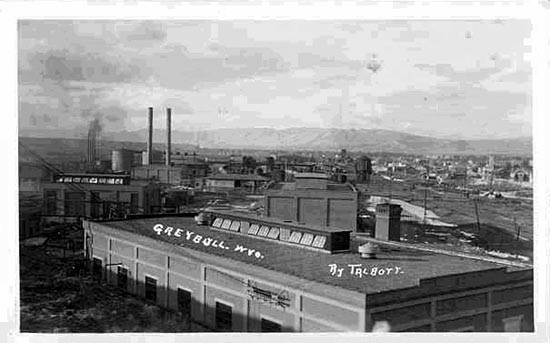 Refineries, 1920's. Photo by Gifford Talbott. For discussion of the Midwest Oil Company, see Casper and Oil Camps.
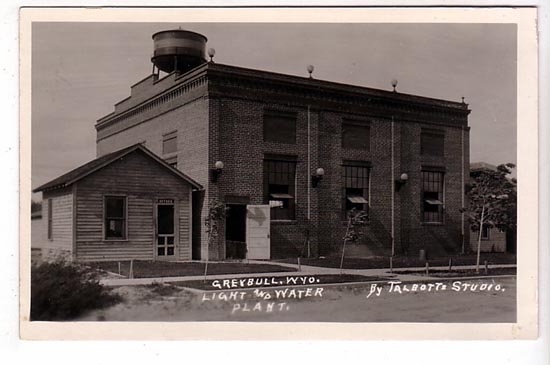 Power, Light and Water Plant, 1920's. Photo by Gifford Talbott.
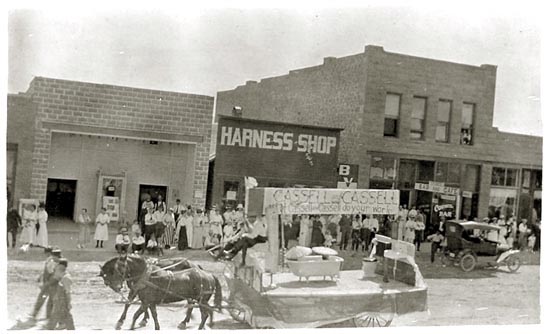 Labor Day Parade, 1910. The two-story building to the right of the Harness Shop, houses a cafe and saloon. Music this page: Whiskey in the Jar. Next page: Greybull continued. |

